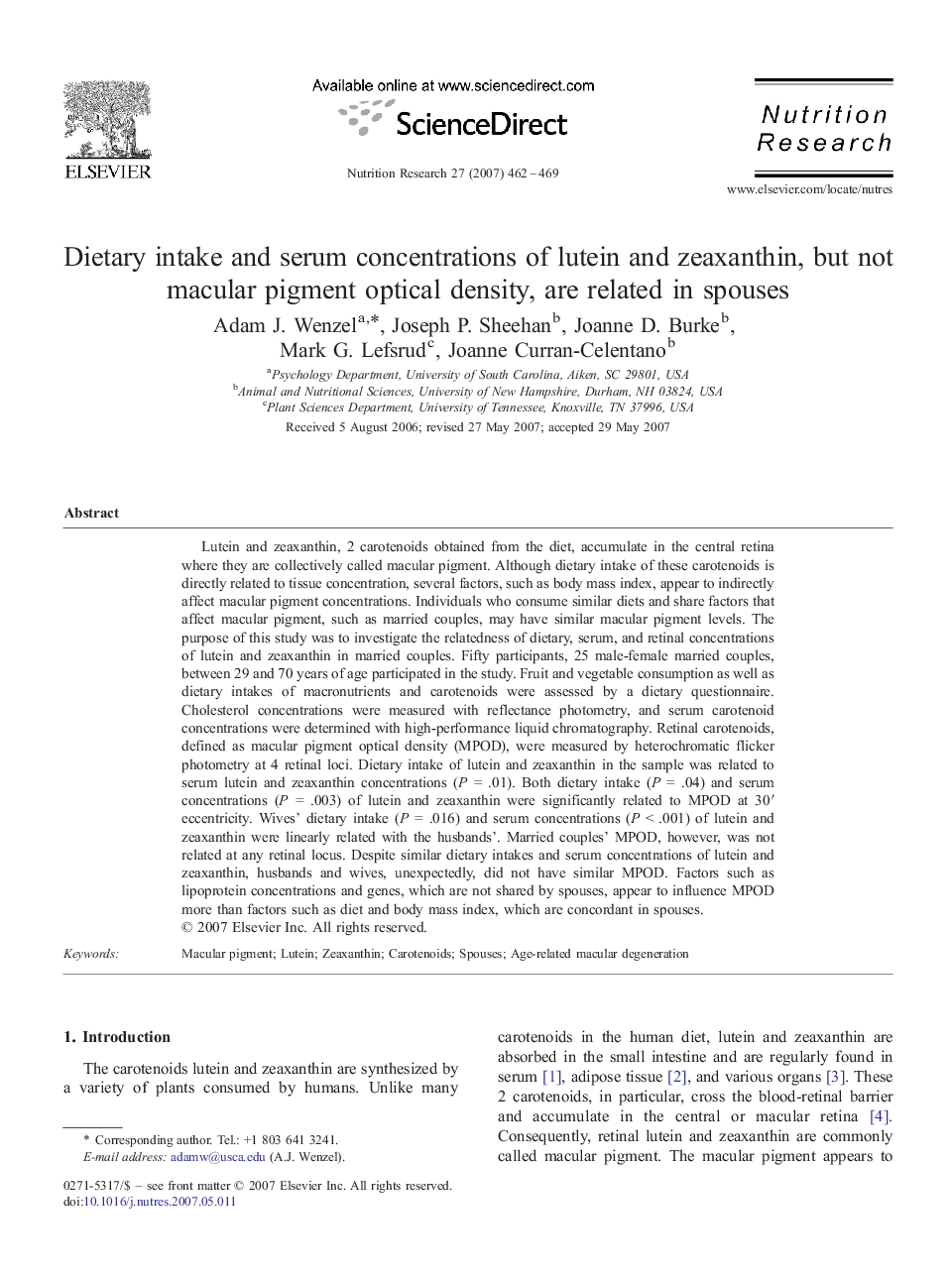| کد مقاله | کد نشریه | سال انتشار | مقاله انگلیسی | نسخه تمام متن |
|---|---|---|---|---|
| 2809466 | 1158048 | 2007 | 8 صفحه PDF | دانلود رایگان |
عنوان انگلیسی مقاله ISI
Dietary intake and serum concentrations of lutein and zeaxanthin, but not macular pigment optical density, are related in spouses
دانلود مقاله + سفارش ترجمه
دانلود مقاله ISI انگلیسی
رایگان برای ایرانیان
کلمات کلیدی
موضوعات مرتبط
علوم زیستی و بیوفناوری
بیوشیمی، ژنتیک و زیست شناسی مولکولی
علوم غدد
پیش نمایش صفحه اول مقاله

چکیده انگلیسی
Lutein and zeaxanthin, 2 carotenoids obtained from the diet, accumulate in the central retina where they are collectively called macular pigment. Although dietary intake of these carotenoids is directly related to tissue concentration, several factors, such as body mass index, appear to indirectly affect macular pigment concentrations. Individuals who consume similar diets and share factors that affect macular pigment, such as married couples, may have similar macular pigment levels. The purpose of this study was to investigate the relatedness of dietary, serum, and retinal concentrations of lutein and zeaxanthin in married couples. Fifty participants, 25 male-female married couples, between 29Â and 70Â years of age participated in the study. Fruit and vegetable consumption as well as dietary intakes of macronutrients and carotenoids were assessed by a dietary questionnaire. Cholesterol concentrations were measured with reflectance photometry, and serum carotenoid concentrations were determined with high-performance liquid chromatography. Retinal carotenoids, defined as macular pigment optical density (MPOD), were measured by heterochromatic flicker photometry at 4 retinal loci. Dietary intake of lutein and zeaxanthin in the sample was related to serum lutein and zeaxanthin concentrations (P = .01). Both dietary intake (P = .04) and serum concentrations (P = .003) of lutein and zeaxanthin were significantly related to MPOD at 30â² eccentricity. Wives' dietary intake (P = .016) and serum concentrations (P < .001) of lutein and zeaxanthin were linearly related with the husbands'. Married couples' MPOD, however, was not related at any retinal locus. Despite similar dietary intakes and serum concentrations of lutein and zeaxanthin, husbands and wives, unexpectedly, did not have similar MPOD. Factors such as lipoprotein concentrations and genes, which are not shared by spouses, appear to influence MPOD more than factors such as diet and body mass index, which are concordant in spouses.
ناشر
Database: Elsevier - ScienceDirect (ساینس دایرکت)
Journal: Nutrition Research - Volume 27, Issue 8, August 2007, Pages 462-469
Journal: Nutrition Research - Volume 27, Issue 8, August 2007, Pages 462-469
نویسندگان
Adam J. Wenzel, Joseph P. Sheehan, Joanne D. Burke, Mark G. Lefsrud, Joanne Curran-Celentano,